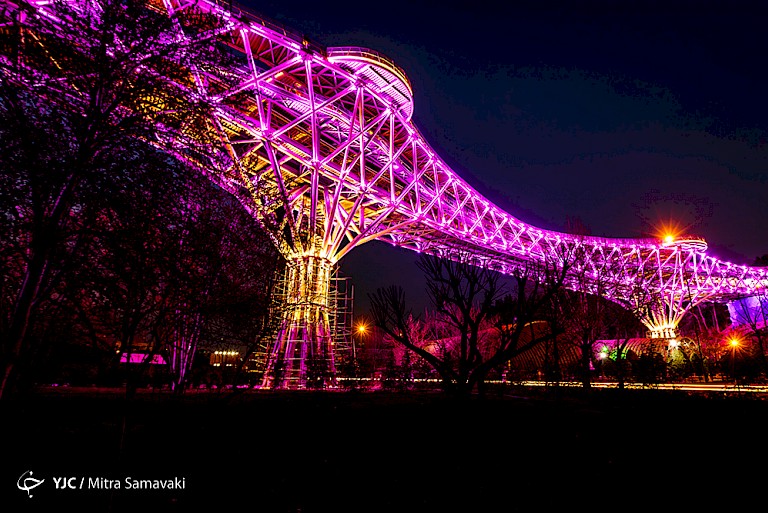



"The bridge is not just a structure to connect from one point to another, but also a place to stay and enjoy." Soaring 270m across Modarres Highway, Pol-e-Tabiat, which connects two parks in the northern district of Iran's capital, reflects her aspirations about Iranian architecture, Araghian said.
To achieve her goal, Araghian designed Pol-e-Tabiat to have three layers, including one level for cafes, another for walking, running and biking, and a third platform for viewing the highway below, or the Alborz Mountains, which towers beyond the skyline of Tehran. Entering from the west on Ab-o-Atash (Water and Fire) Park, the bridge opens with a 60m-wide entrance with flower gardens, making it appear like it is still part of the park. The multiple paths, sourced from "100 percent recyclable composite wood", lead visitors to the different levels of the bridge.
Supported by three tree-like columns, Pol-e-Tabiat was built with a curved body, to give visitors different perspectives depending on what they are facing so when you are walking on it, you don't really see where you are heading, adding to the mystery, as if you are walking on a path. To put up the bridge's foundation, Araghian and her team also searched for a spot where there were a minimum number of trees. It took a year for Araghian and her team at Diba Tensile Architecture to design Pol-e-Tabiat. They worked with the Italian engineering firm Massimo Maffies for the construction, which started in the fall of 2010.
Behzadi, who oversaw the construction, said installing the 2,000 tonnes of steel hundreds of metres high above a major highway, was the most challenging part of their tasks. Engineers had to set up a platform to ensure the safety of workers. Temporary tunnels were also built to prevent construction materials and other objects from hitting the cars buzzing below. Because of the trade sanctions imposed on Tehran, obtaining construction materials from overseas was also a headache. Contractors had difficulty transporting materials and paying for them, which caused delay on the project. Four years, 10,000 cubic metres of concrete, and millions of labour hours later, the bridge was completed in October 2014.
All copyright belongs to Shanghai Academy of Fine Arts, Shanghai University.



